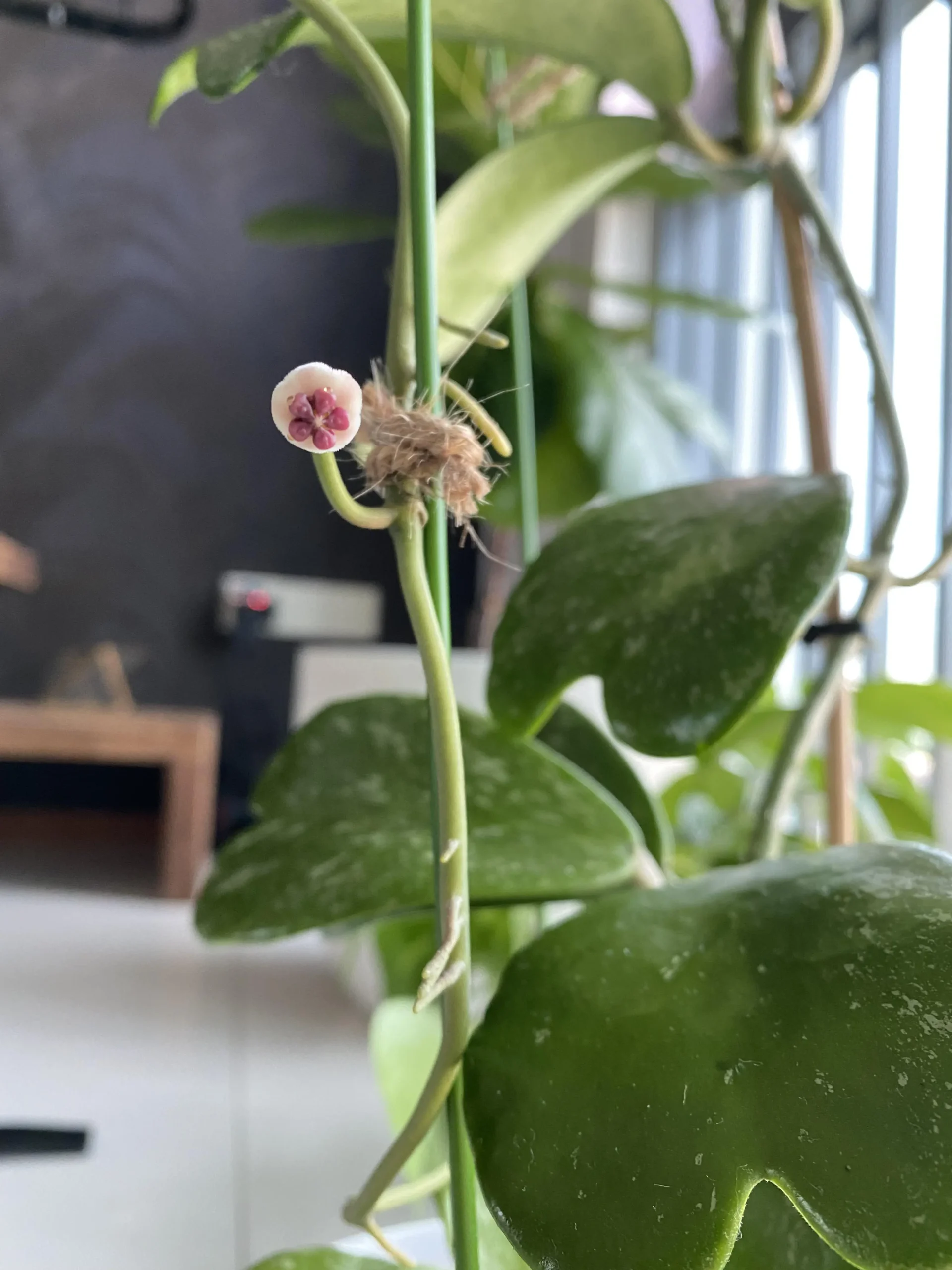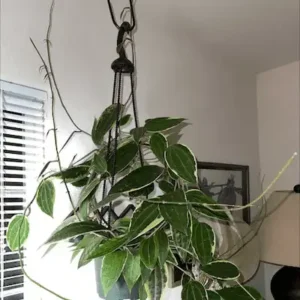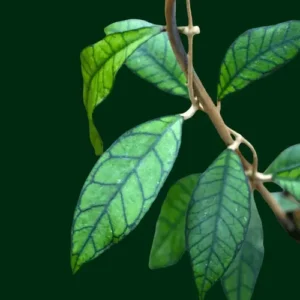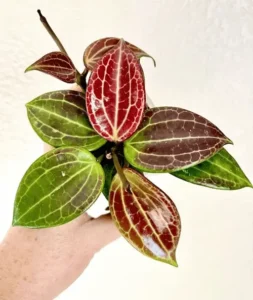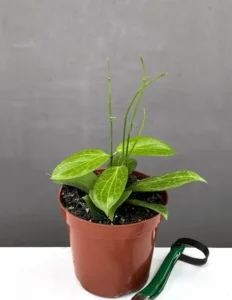Introduction
Hoya plants, often called “wax plants,” are known for their glossy leaves and fragrant, star-shaped flowers. These flowering vines make wonderful houseplants due to their hardy nature and stunning appearance. But if you’ve ever waited for your Hoya to bloom, you may wonder how to get those beautiful buds to appear and open. In this guide, we’ll dive deep into understanding the Hoya plant buds, explaining how they form, what they need to grow, and how to troubleshoot common issues that might arise.
A Guide to Growth, Care, and Troubleshooting
Here is a detailed guide to growth, care, and troubleshooting the hoya plants in case of buds.
Introduction to Hoya Plants
The Unique Charm of Hoya Plants
Hoya plants are unique in their beauty and structure. With thick, waxy leaves that grow along vines, they add an exotic touch to any indoor garden. However, the most exciting part of growing a Hoya plant is its flowers. These blooms are not only visually captivating but also emit a sweet fragrance, especially during the evening. Getting your Hoya to bloom requires time, patience, and the right care, but the reward is well worth the wait.
Why Hoya Plants Are Popular Among Houseplant Enthusiasts
Hoyas are a favorite among plant lovers for several reasons. They are relatively low maintenance, drought-tolerant, and can live for many years. Their ability to bloom repeatedly from the same peduncles also adds a sense of anticipation and excitement. Plus, they come in many varieties, each offering different flower shapes and colors, ensuring that there’s a Hoya species for every plant enthusiast.
Anatomy of a Hoya Plant
Leaves and Vines
The thick, waxy leaves of Hoyas grow on long vines that can either climb or trail, depending on how you train the plant. These leaves are not just for show—they help the plant conserve water, making Hoyas very tolerant of dry conditions.
Hoya Flowers and Buds
Hoya flowers, or inflorescences, grow from specialized structures called peduncles. These buds, once formed, are the precursors to the stunning, star-shaped flowers. Watching the buds swell and eventually bloom can be a rewarding experience for any gardener which concerns understanding the Hoya plant buds.
Peduncles: The Key to Hoya Bud Development
Peduncles are where the magic happens for Hoyas. Unlike many plants, Hoyas don’t discard the structures that produce flowers after blooming. Peduncles remain on the plant and can produce new buds season after season, making them essential to long-term blooming success.
The Life Cycle of Hoya Buds
Formation of Buds
Hoya buds form on the tips of the peduncles. These buds start small but slowly grow as the plant prepares to bloom. It can take weeks or even months for these buds to mature, depending on the environment and variety of the Hoya.
Growth Phases of Hoya Buds
Once the buds form, they go through several stages. Initially, they appear as tiny nubs, but over time, they expand and develop the characteristics of the mature flower. During this period, ensuring the plant has consistent care is critical, as any major disturbances can cause the buds to drop.
When and How Hoya Buds Bloom
Hoya plants typically bloom in the spring and summer, though some varieties may bloom at other times of the year. The flowering process is relatively slow, but once the buds begin to open, you’ll be greeted with beautiful flowers that last for several days to weeks, depending on the species which concerns understanding the Hoya plant buds.
How to Care for Hoya Plants to Encourage Buds
The Importance of Light
Hoyas thrive in bright, indirect light. Too much direct sunlight can scorch the leaves, while too little light will prevent the plant from producing buds. A well-lit room with filtered sunlight is ideal for helping your Hoya develop buds.
Watering Hoya Plants Correctly
Watering is another critical factor in encouraging Hoya buds. Overwatering can lead to root rot, which will stunt growth and prevent blooming. On the other hand, letting the soil dry out completely for extended periods can also stress the plant. A good rule of thumb is to water the plant when the top inch of soil feels dry to the touch.
Ideal Temperature and Humidity Conditions
Hoyas prefer warm temperatures, ideally between 60°F to 80°F (16°C to 27°C). They also love humidity, so if you live in a dry climate, you might need to boost the humidity levels by misting the plant or placing it near a humidifier.
The Role of Fertilization in Bud Development
Feeding your Hoya (plant) with a balanced, water-soluble fertilizer once a month during the growing season can help stimulate bud formation. Look for a fertilizer with a higher phosphorus content, which promotes blooming.
Common Problems with Hoya Buds
Why Do Hoya Buds Fall Off?
One of the most frustrating experiences for Hoya plant owners is watching buds form, only to see them drop before blooming. This can happen for several reasons, including sudden changes in temperature, overwatering, or moving the plant. Keeping conditions stable is key to preventing bud drop.
Dealing with Non-Flowering Hoyas
If your Hoya isn’t producing any buds at all, it might not be receiving enough light, or it could be too young. Some Hoyas take several years to reach maturity and start flowering. Patience is essential with this plant!
Pests and Diseases Affecting Hoya Buds
Mealybugs, aphids, and spider mites are common pests that can affect Hoya buds. Regularly inspecting your plant for pests and treating any infestations promptly will help ensure healthy bud growth which concerns understanding the Hoya plant buds.
How to Promote Hoya Bud Growth
Pruning and Training Hoya Plants for Better Buds
Pruning your Hoya plant can encourage bushier growth and more peduncles. Focus on removing dead or leggy growth, but be careful not to cut off any active peduncles, as this is where new buds will form.
Seasonal Changes and Their Impact on Bud Growth
Hoyas are sensitive to seasonal changes. They tend to grow more actively in the warmer months and may go dormant during the winter. Adjusting your care routine, such as reducing watering during dormancy, can help the plant conserve energy for the next blooming cycle.
Repotting and Its Effect on Budding
Hoyas don’t like to be repotted often, as they prefer slightly root-bound conditions. Repotting too frequently can disrupt budding and flowering. Aim to repot only every 2-3 years, or when the plant becomes root-bound.
Propagating Hoya Plants from Buds and Cuttings
Steps to Successfully Propagate Hoya Plants
Propagation is a great way to expand your Hoya collection. The most common method is through stem cuttings, but buds can also play a role in propagation if they are attached to a healthy section of the plant.
How Buds Play a Role in Propagation
While Hoyas are typically propagated from cuttings rather than buds, if your cutting has a peduncle with buds, you may eventually see flowers from the new plant once it establishes roots and matures.
| FAQs How long does it take for Hoya buds to bloom? It can take several weeks to months for Hoya buds to bloom, depending on the variety and growing conditions. Should I remove old peduncles on my Hoya plant? No, you should never remove old peduncles. Hoyas bloom from the same peduncles year after year, so removing them may reduce flowering. Can I mist my Hoya to encourage buds? Yes, misting can help increase humidity around your Hoya, which can promote bud growth, especially in dry environments. What are the best fertilizers for Hoya plants? A balanced fertilizer with a slightly higher phosphorus content will help encourage blooming. Apply once a month during the growing season. Why do my Hoya buds turn yellow before blooming? Yellowing buds can be a sign of overwatering, sudden temperature changes, or pest problems. Checking your plant’s care routine can help resolve the issue. |
Conclusion
Growing a Hoya plant is a journey that requires patience, especially when it comes to bud formation and blooming. By providing the right care, including proper lighting, watering, and feeding, you’ll be rewarded with beautiful, fragrant flowers. Remember, the key to success is consistency. With time and the right environment, your Hoya will thrive and bloom year after year.

